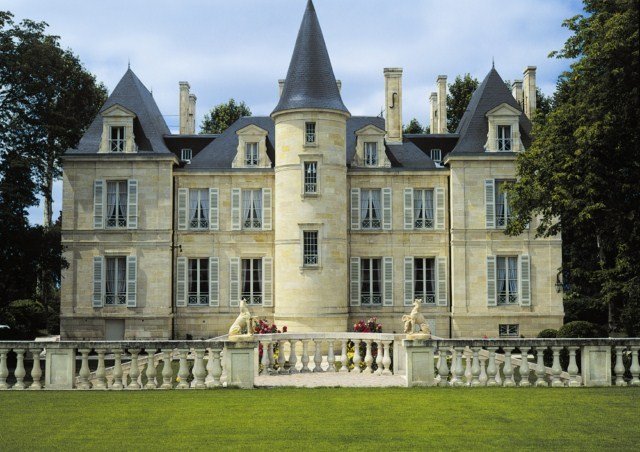
Before we get to second wines, Sunday, March 17 is St. Patrick’s day. So, what goes with the traditional corned beef and cabbage? Well . . . beer. But, since this is a wine blog, here’s a couple of wine suggestions. If you prefer a red, try either a Beaujolais Villages or Beaujolais cru (such as Fleurie) from a good producer (such as Louis Jadot and George DeBoeuf). The reason for this pairing is that corned beef is salty, which clashes with tannins, and Beaujolais is low in tannins. If you prefer a white, try a dry Riesling from Alsace (Trimbach or Lucien Albrecht). Sláinte!
Now, on to second wines. For our wine of the week, we selected a Wine Concepts favorite from Bordeaux — a 2014 “Reserve de la Comtesse” (about $35 retail). This is the “second wine” of the Pauillac “second growth” Château Pichon Longueville Comtesse de Lalande (pictured above). The Reserve de la Comtesse is a medium to full-bodied wine that is made from about 60 percent Cabernet Sauvignon and 40 percent Merlot. The wine shows dark black fruit and chalky tannins, and is a good value. So, if you've got a really nice steak and want a very nice wine, you’ll enjoy this wine.
Second wines. Most of the top Bordeaux producers make a “second wine” in addition to their top wine (Grand Vin). The reason for this is to maintain quality by using only their best grapes in the top wine. Grapes that don’t make the cut, usually from lesser plots or younger vines, are used to make the second wine. In Bordeaux, a second wine must be made from grapes from the same Château and it’s made by the same winemaking team as the “Grand Vin.” So, you can often (but not always) get a nice wine for a good price. Unlike the Grand Vins, which need to be cellared for years before drinking, you can drink a second wine when it’s young.
How the second wine is made is up to the producer’s judgment. In part, it depends on the availability of grapes. In some years, there’s an abundance of grapes designated for the second wine; in other years most may go into the first wine and the producer may not even make a second wine. Also, economics comes into play. The second wines of the very best chateaux command steep prices. For example, a “first growth" Château Latour retails for more than $1,500 — if you can find it — and the second wine “Fort de Latour” costs around $270. Compare that with the $35 Reserve de la Comtesse and it’s $250 cousin the Château Pichon Longueville Comtesse de Lalande.
Second growths. It is part of the French DNA to make wine complicated. A "second wine" is not the same as a "second growth." The oldest Bordeaux quality classification (the 1855 Classification) ranks certain top Chateaux as first growth (the best) through fifth growth (in French "premiere cru" through "cinquième cru"). So, the Château Pichon Longueville Comtesse de Lalande is a second growth, and the Reserve de la Comtesse is its second wine. Got it? It you want more details on Bordeaux and its classification systems, click here.
Although the concept of second wines started in Bordeaux, it has expanded to other areas. For example, in Chateauneuf du Pape the "Coudolet de Beaucastle" ($25 retail) - an excellent, great value Côtes de Rhone that is sometimes called the "baby Beaucastle" - is the second wine of the Château de Beaucastel ($80 retail). Second wines are also found in Italy, Spain and some U.S. cult wines.
